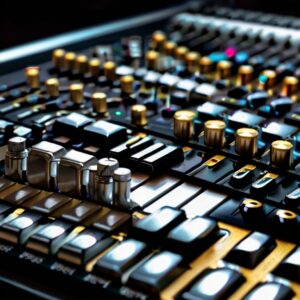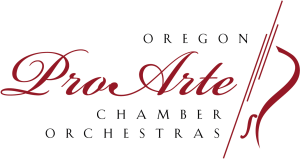The convergence of electronic music and classical music is not just a merging of two genres; it’s an exhilarating evolution of sound that transcends traditional boundaries. The past few decades have seen an unparalleled integration of electronic elements into classical compositions, creating a new hybrid genre that is resonating with audiences worldwide. This fusion brings together the depth and complexity of classical music with the innovative and dynamic elements of electronic music, leading to intriguing new sounds and textures. By exploring this integration, we can better understand its impact on contemporary music and the potential it holds for future musical developments.
A Journey Through History
The lineage of classical music is storied and profound, dating back centuries to orchestral and operatic traditions that emphasized acoustic instruments like strings, brass, woodwinds, and percussion. In contrast, electronic music, a comparatively recent phenomenon from the 20th century, originates from electronic synthesis and production, often characterized by repetitive motifs and ambient sounds.
The pivotal moment for the integration of these two genres can be traced back to the advent of musique concrète in the mid-20th century. Pioneers like Pierre Schaeffer began experimenting with electronic sounds, incorporating them into compositions that still held a connection to classical forms. This experimentation paved the way for further exploration by composers who were keen to explore new soundscapes.
Innovators and Trailblazers
One cannot talk about the melding of classical and electronic music without mentioning the influential works of Wendy Carlos with the groundbreaking album “Switched-On Bach” in 1968. Utilizing the Moog synthesizer, Carlos reinterpreted Johann Sebastian Bach’s compositions, which not only bridged the gap between these genres but also brought synthesizer music to mainstream audiences.
Following in these footsteps, composers like Philip Glass and Steve Reich incorporated minimalist structures influenced by repetitive electronic beats into their works. Their compositions, though rooted in classical structures, began to echo the rhythmic and textural patterns found in electronic music, blending synthesized sounds with traditional orchestral arrangements to create something entirely new.
Catalysts of Change
Rapid advancements in technology have fundamentally impacted how composers integrate electronic music with classical forms. The development of digital synthesizers, software-based sound manipulation tools, and computer-generated algorithms has opened up a new realm of possibilities for composers. These tools allow for the precise control of sound, enabling the creation of complex layers and textures that can mimic or enhance orchestral arrangements.
For instance, Max Richter’s “Vivaldi – The Four Seasons Recomposed” demonstrates how software not only alters traditional sounds but also integrates digital enhancements to reinterpret timeless pieces. Richter’s work maintains the narrative flow of Vivaldi’s original compositions while infusing them with modern, cinematic textures and electronic elements that attract both classical purists and new listeners alike.
Expanding Audiences and Venues

The integration of electronic elements into classical music performances has not just expanded the audience base by making these concerts more appealing, but it has also dramatically transformed the venues traditionally associated with classical music. Historical concert halls and opera houses, once the sanctums of purely orchestral or operatic works, are progressively embracing the innovative fusion of time-honored classical music with cutting-edge electronic sounds. This evolution in performance style invites a more eclectic and varied audience, including younger and more diverse groups who might have previously viewed classical music as distant or outdated.
Renowned ensembles such as the Kronos Quartet, and high-profile events like the BBC Proms, are at the forefront of this movement. These groups and events strategically incorporate electronic elements into their performances, aiming to attract and engage a new generation of listeners with a fresh approach to classical music. This strategy not only helps in retaining the intrinsic value and appeal of classical music but also breathes new life into the genre by merging it with modern, electronic influences. As a result, the traditional acoustic richness of classical instruments is seamlessly interwoven with the vibrant, often unpredictable nuances of electronic sounds, creating a dynamic and captivating musical experience.
These innovative performances are reshaping the landscape of classical music and debugging the myth that it is meant only for certain audiences. By updating the context and content of classical music performances, the genre is kept vibrant and relevant, appealing to a broader spectrum of listeners. This hybrid musical experience not only preserves the legacy of classical music but also pushes its boundaries, making it more inclusive and representative of contemporary musical tastes and trends.
The Impact on Performance Practice
The integration of electronic elements into classical music has also transformed performance practice. Musicians today are often required to interact with technology, whether that involves triggering samples, syncing with electronic beats, or even collaborating with visual artists and programmers to create a multimedia experience.
This shift demands new skills from classical musicians, including familiarity with digital interfaces and electronic music production. It also encourages a new form of creativity and expression, where performers are not just musicians but holistic artists contributing to every aspect of the performance.
Educational Implications
Education in music has also felt the impact of this genre blending. Music conservatories and universities worldwide are increasingly offering courses in electronic music production, digital sound design, and the integration of music technologies. This curriculum expansion is a nod to the evolving landscape of music, where an understanding of both classical techniques and electronic production is essential for the next generation of musicians.
Students trained in these environments are more versatile. They are entering the music scene with a broader skill set, capable of composing and performing across a range of musical styles, continuing the tradition of innovation and fusion in music.
The Artistic Horizon
As we look to the future, the integration of electronic and classical music is set to deepen, powered by continuous technological advancements and the ever-evolving tastes of audiences. This fusion not only respects musical traditions but also pushes the boundaries of what music can be. It is a testament to the adaptability and enduring appeal of classical music as it morphs and melds with the inexorable rise of electronic music.
This ongoing blend enriches the global music scene, creating ever more immersive, expressive, and meaningful experiences. Through fully synthesized replicas of classical compositions or subtle, nuanced incorporations of electronic elements into orchestral frameworks, this genre-bending endeavor continues to inspire innovation, challenge norms, and redefine the musical landscape.
